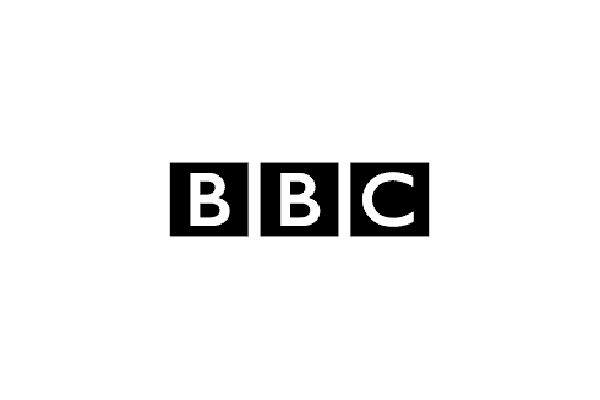These accounts let you withdraw and deposit money whenever you like without any penalties. Easy access ISAs typically have the lowest interest rates and are best for short-term or emergency savings.
Our best cash ISA rates
Explore our best cash ISA rates up to 5.71%
Our top cash ISA rates - last updated Apr 28 2025
| Product type | AER | |
|---|---|---|
| Instant Access Cash ISAs | 5.71% | |
| Notice Cash ISAs | 4.15% | |
| 1 Year Fixed Cash ISAs | 4.30% | |
| 2 Year Fixed Cash ISAs | 4.11% | |
| 3 Year Fixed Cash ISAs | 4.05% |
What is a cash ISA?
A cash ISA (Individual Savings Account) is a tax-free savings account, which means you can earn interest without having to pay tax on your savings. The annual ISA allowance is £20,000 and this can be spread across different types of ISAs, including a cash ISA. This encourages saving as the tax-free benefit means you can grow your money quicker.
Any UK resident aged 18 or over can open a cash ISA. If your child is under 18, they can't open an adult ISA, but you can open a junior cash ISA for them instead.
Why should you get a cash ISA?
Cash ISAs are attractive to savers because you never pay tax on the interest you earn. However, everyone has a personal savings allowance from the government that entitles them to a certain amount of interest tax free.
So, as non-ISA accounts tend to pay better interest than their ISA counterparts, a cash ISA is best for someone who is already paying tax on their savings interest or near the limit of the personal savings allowance.
If you are a basic rate taxpayer (20%), you can earn up to £1,000 in interest without paying tax, while higher taxpayers (40%) have an allowance of £500. This means that most people won't be paying tax on interest from normal savings accounts anyway. However, additional rate taxpayers don’t have a personal savings allowance at all.
Four things you need to know about cash ISAs
A cash ISA works in a similar way to a standard savings account - but remember these four points.
1. You can pay into more than one cash ISA in a financial year
This means you can spread your money across a fixed-rate cash ISA and an easy access cash ISA.
2. You can only pay in £20,000 per person each year
However, you can transfer as much as you like from one ISA provider to another, as long as the account provider allows transfers in. This limit is the total you can invest in all different kinds of ISAs. So, if you have a cash ISA and a stocks and shares ISA, you will need to split the limit between them.
3. All the money you make in interest is tax-free
The tax-free benefit is a huge advantage to a cash ISA because it means you'll maximise the interest earned. Remember your ISA allowance resets every tax year on April 6. Unused balance does not roll over into the next year.
4. There are different types of cash ISAs
It's important to explore the different types of cash ISAs before moving your money, as they are designed for different savings goals. For example, a fixed-rate cash ISA might have a competitive interest rate but your money is locked away for a set period. This differs from an easy access cash ISA as you can normally withdraw money when it suits you, but rates can be lower.
What are the different types of cash ISAs?
![Easy access cash ISAs]()
Easy access cash ISAs

These accounts let you withdraw and deposit money whenever you like without any penalties. Easy access ISAs typically have the lowest interest rates and are best for short-term or emergency savings.
![Notice cash ISA]()
Notice cash ISA

With a notice ISA, you will need to give notice to withdraw money from your account or you will be penalised via loss of interest or a charge. The notice period varies between accounts but could be up to 180 days. These accounts tend to pay better interest than easy-access ISAs.
![Fixed-rate cash ISA]()
Fixed-rate cash ISA

Fixed-rate ISAs give you a good interest rate in exchange for you keeping your money locked away for a specific length of time, usually between one and five years. Generally, the interest rates are higher the longer the term of the deal, but this isn’t always true so be sure to shop around.
![Lifetime cash ISA]()
Lifetime cash ISA
Lifetime ISAs are designed to help people under the age of 40 to save for their first home or towards retirement. The maximum annual deposit is £4,000 each year, to which the government adds a 25% bonus.
![Junior cash ISA]()
Junior cash ISA
Junior cash ISAs allow you to save for your child’s future, as long as he or she is under 18 and living in the UK. The money in the account can be withdrawn by the child once they reach 18 years of age.
![Regular saver cash ISA]()
Regular saver cash ISA

These accounts generally pay a higher rate of interest that’s fixed for a set period – say 12 months. To qualify, you must agree to pay in a certain amount each month, often between around £25 and £250.
What are the different types of cash ISAs?
Easy access cash ISAs
Notice cash ISA
With a notice ISA, you will need to give notice to withdraw money from your account or you will be penalised via loss of interest or a charge. The notice period varies between accounts but could be up to 180 days. These accounts tend to pay better interest than easy-access ISAs.
Fixed-rate cash ISA
Fixed-rate ISAs give you a good interest rate in exchange for you keeping your money locked away for a specific length of time, usually between one and five years. Generally, the interest rates are higher the longer the term of the deal, but this isn’t always true so be sure to shop around.
Lifetime cash ISA
Lifetime ISAs are designed to help people under the age of 40 to save for their first home or towards retirement. The maximum annual deposit is £4,000 each year, to which the government adds a 25% bonus.
Junior cash ISA
Junior cash ISAs allow you to save for your child’s future, as long as he or she is under 18 and living in the UK. The money in the account can be withdrawn by the child once they reach 18 years of age.
Regular saver cash ISA
These accounts generally pay a higher rate of interest that’s fixed for a set period – say 12 months. To qualify, you must agree to pay in a certain amount each month, often between around £25 and £250.

Our best instant access cash ISA
A tax-free savings account that allows you to deposit and withdraw at a time that suits you.

Lucinda O'Brien, our savings expert says..
Pros and cons
Account details
Eligibility
Our best fixed rate cash ISA
A tax-free savings account that can have a higher interest rate in exchange for locking away your money for a set period of time.

Lucinda O'Brien, our savings expert says..
Pros and cons
Account details
Eligibility
Our best notice cash ISA
A tax-free savings account that requires notice before withdrawals but can offer higher interest rates.

Lucinda O'Brien, our savings expert says..
Pros and cons
Account details
Eligibility
How to choose the best cash ISA
Interest rate
The higher your interest rate, the more money you will make on your savings. However, getting the very highest rate usually means locking your money away for longer or agreeing to give notice before making a withdrawal.
Withdrawal limit
Some accounts limit the number of withdrawals you can make each year or cut the interest rate if you access your cash too often. This can mean better returns on your savings, but only if you don’t need the money. Easy access ISAs pay less interest but allow you to withdraw whatever you need.
Term length
If you choose a fixed rate ISA, you’ll have a guaranteed interest rate for a set period. The rates on offer can vary widely, and often depend on how long you lock the money away, so it’s worth shopping around for the best deal.
Flexibility
Some accounts allow you to withdraw money you’ve saved in the same year, without it counting towards your ISA allowance. Other accounts say that money is part of your allowance even though you’ve both paid it in and taken it out in the same financial year.
Eligibility and access
Some providers save their best rates for existing customers, so check what your account providers offer. You should also check out how easy the account is to manage – for instance, is there an app and can you use it to add cash funds.
Minimum deposit
Plenty of ISAs will allow you to start saving from just £1, but some impose a higher minimum deposit. There are even regular saver accounts that will pay you higher interest if you commit to saving a certain amount each month.
Charges and penalties
If you have a fixed rate ISA and you want to withdraw your money before the term is up, you’ll probably face an interest penalty or charges. Equally, some providers will charge you exit fees if you transfer your ISA elsewhere. Check the small print before signing up.
Pros and cons
Pros
Cons
What are the alternatives to a cash ISA?
There are many alternatives to a cash ISA, but where to save for the best returns depends on what you want to do with your money and when you need access to it. Here are some of the main options:
Stocks and shares ISAs - these let you put money into shares and other investments without paying income tax or capital gains tax on the growth. Returns could be far higher than with a cash ISA, but the value of your money could also fall if your investments perform poorly. Stocks and shares ISAs are best for long-term savings, so you can ride out any volatility.
Standard savings accounts - you won't pay tax on the first £1,000 of interest you earn if you're a basic rate taxpayer, although this drops to £500 if you're a higher rate taxpayer and £0 if you’re an additional rate payer.
Fixed-rate bonds - these fixed-rate savings accounts allow you to invest a large sum for a fixed period for a guaranteed return. During the fixed period, you have no access to your funds, so they’re better for medium-term savings.
High-interest current accounts – some current accounts offer high rates of interest on positive balances. This can make them a good place to stash emergency savings you may need to access quickly.
FAQs
What is your best cash ISA interest rate?
Our best cash ISA rate is currently 5.71% as of Apr 28 2025.
Is my money safe in a cash ISA?
Yes, your money is safe in a cash ISA as most are backed by the Financial Services Compensation Scheme (FSCS, which protects your money up to £85,000 with a single institution).
Can I take money out of a cash ISA and put it back in again?
Whether you can take money out of a cash ISA and put it back in again depends on which kind of account and provider you choose. Some ISAs let you withdraw money and replace it during the same tax year without using up any more of your ISA allowance.
Can I take my money out of my ISA whenever I want?
You can take money out of your cash ISA whenever you want if it allows unlimited withdrawals. However, there may be restrictions on paying money back in.
Can I pay into multiple ISAs?
Yes, you can have as many ISAs as you want, but you can't exceed the £20,000 allowance. However, if you're under 40, you can only pay into one lifetime ISA.
Can I have an ISA if I have bad credit?
Yes, you can have an ISA if you have bad credit as your finances are not checked when you open a savings account. If you need help choosing the right savings account, read this guide.
Didn’t find what you were looking for?
Below you can find a list of our savings pages:
Investment pages (capital at risk):
Join our personal finance newsletter for top deals and insights
You can unsubscribe from emails at any time. For more information about how we process your information, please read our Privacy Notice.
Found the Perfect Pension with Ease

Excellent

Amazing experience even though it…
























